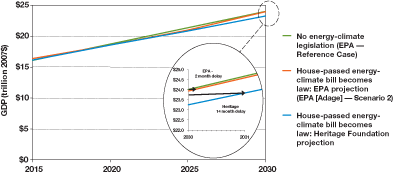Comprehensive Energy, Climate Legislation Still Has Chance of Passing
While there is still a chance that comprehensive climate change legislation, driven by the interest of the White House, will gain traction in the Senate in time for the 111th Congress to take action, events and attitudes conspire to make that an ever-more-tenuous possibility.
The push for action this year began in earnest in early May, with the unveiling of the American Power Act. Nuclear power, industry and environmental organizations support the bill, which is sponsored by senators John Kerry (D-Mass.) and Joe Lieberman (I-Conn.). The bill champions domestic energy development and implements a cap and trade system. It is the last hope to get climate change legislation moving in the Senate this year. But given the bitter partisan battle over health care reform, the so-far weak economic recovery and the upcoming fall elections, getting the bill through the Senate will be a difficult task.
The 12-title-long American Power Act embraces the concept of comprehensive energy and climate legislation. The bill aims to reduce carbon emissions 17 percent by 2020 and 83 percent by 2050, as compared to 2005 levels. This will be accomplished in large part through a cap and trade scheme. The emission caps apply to emitters of more than 25,000 tons of carbon, starting with power companies first and then moving to heavy industry. The caps apply only to the two percent of American businesses — or 7,500 power plants and factories — that are responsible for 75 percent of the nation's greenhouse gas emissions. Revenues from selling allowances will be redirected to consumers and also will be used to reduce the national deficit.
In a pitch to create predictability, the bill would trump all state and federal regulations for reducing greenhouse gas emissions and set a price on carbon that would rise at a rate of no more than five percent more than inflation, starting in 2013.
On the energy front, the bill addresses domestic energy development — encouraging nuclear power generation, offshore oil and gas development, carbon capture and sequestration, renewable energy and energy efficiency.
For an explanation of cap and trade and how it works, go to www.facilitiesnet.com/11359 BOM
Climate Change Legislation: How Much Economic Impact?

GRAPH: PEW CENTER ON GLOBAL CLIMATE CHANGE: MAY 2010
Cap and trade legislation would slow economic growth modestly over a 15-year period, a range of economic analyses suggests. The green line shows EPA's estimate of gross domestic product (GDP) growth if no cap and trade legislation is passed. The orange line is an EPA estimate of GDP growth under the energy and climate change bill that passed the U.S. House of Representatives in 2009; that estimate indicates the 2030 GDP will take an extra two months to reach the level it would have attained without passage of the House bill. The blue line — an estimate from the Heritage Foundation, which strongly opposed the House bill — shows a 14-month lag in GDP growth by 2030. None of the analyses accounts for any economic benefits of avoiding climate change.
|
Related Topics:















